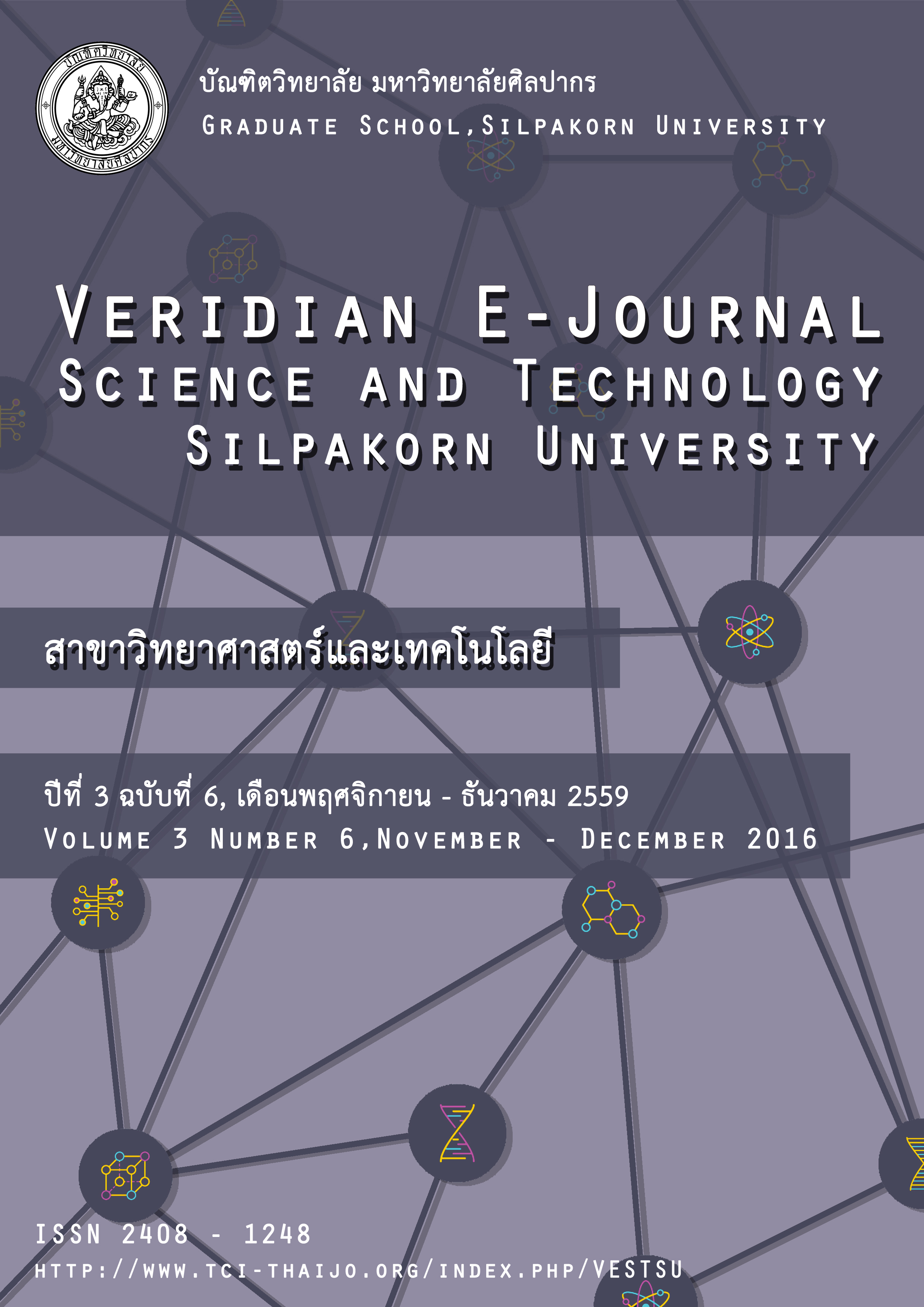Rock Pigeon eggshell study by SEI/BEI/EDX: Ultrastructure and elemental characterization
Main Article Content
Abstract
This study was aimed to examine ultrastructure, and qualitative and quantitative elements of Rock Pigeon by scanning electron microscope (with SEI/BEI/EDX). Nine samples of Rock Pigeon eggshells were collected in Amphoe Mueang, Nakhon Pathom Province, Thailand. All samples were determined for their ultrastructure and performed elemental characterization using secondary electron imaging detector (SEI), Back-scattered electron imaging detector (BEI), and energy dispersive x-ray microanalysis detector (EDX) with smiling program. The results showed that all eggshells had 3 layers; an outer cuticle layer, a middle palisade layer, and an inner mammillary layer at the thickness of 35.91+9.45, 94.29+10.02 and 11.92+2.31 micrometers, respectively. EDX detected 10 elements containing in the eggshells, including oxygen (O), carbon (C), calcium (Ca), magnesium (Mg), aluminum (Al), silicon (Si), phosphorus (P), sodium (Na), sulfur (S) and chlorine (Cl). The percentage of all elements was found in the following order: O (50.89±17.00) > C (24.73±8.54%) > Ca (23.31±19.72%) > Al (0.50±1.23%) > Mg (0.19±0.59%) > Si (0.14±0.60%) > P (0.03±0.08%) > Na (0.13±0.36%) > S (0.02±0.10%) > Cl (0.08±0.20%). This finding can be used as the model for further study of bird eggshells in case of classification and evolution among birds.
Article Details
Section
บทความ : Science and Technology

